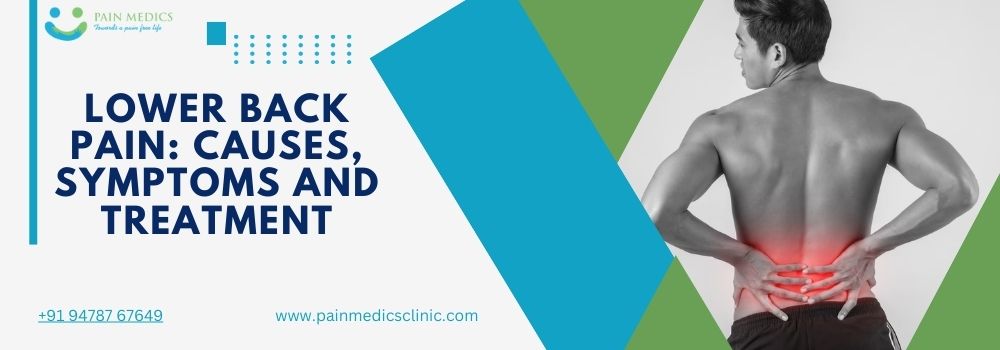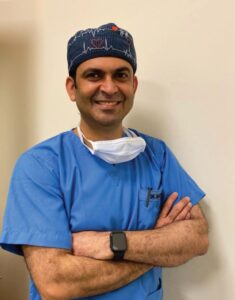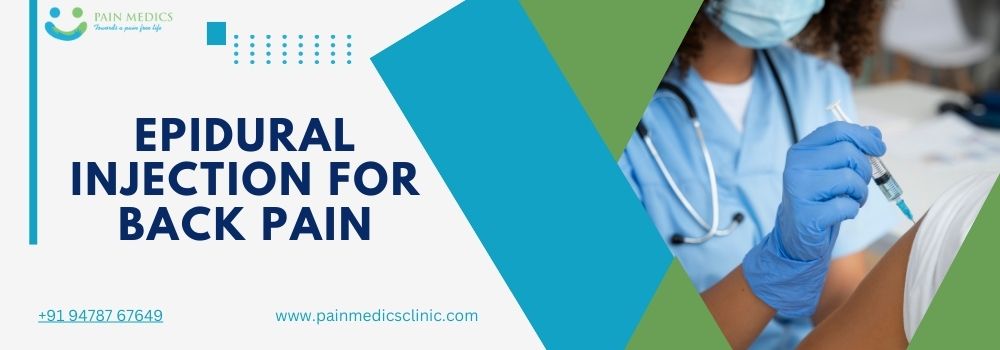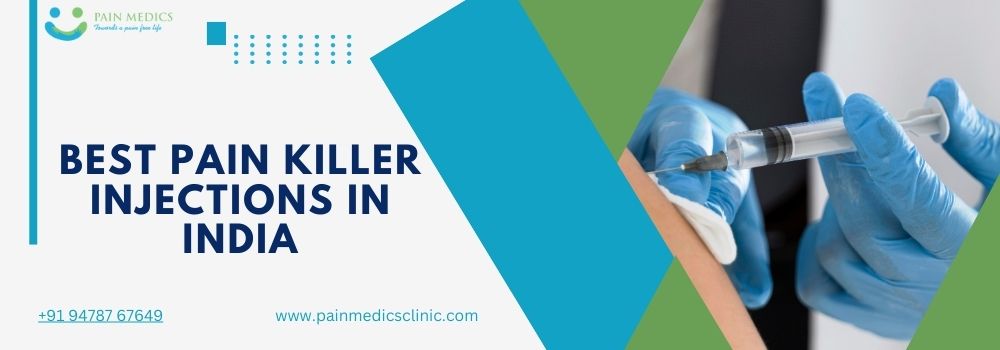Lower back pain is a common problem that affects people from young to old. It mainly happens when the muscles, bones, or nerves in the lower back get hurt or inflamed. Sometimes, sitting for too long, lifting something heavy, or having bad posture can cause pain in the lower back. The pain can be dull, sharp, or like a burning sensation. Some people may also experience hard to bend, walking, or standing for a long time.
Generally, the pain goes away on its own, but at times, it needs proper care.
There are different ways to treat lower back pain, like resting, using a heating pad, gentle exercises, or even visiting a doctor if the pain is serious. Taking care of your back by sitting properly, staying active, and stretching can help prevent pain.
In this article, we will explore the causes, symptoms, and treatments of lower back pain in a simple way.
What Is Lower Back Pain?
Lower back pain is when you feel pain in the lower part of your back. Some common causes include sitting for too long, lifting heavy things the wrong way, bad posture, or an injury. You may also feel stiffness or find it hard to bend and move. In some cases, the pain can spread to the legs.
What Are The Causes Of Lower Back Pain?
Lower back pain can be caused by various medical or general conditions. Some common causes responsible for lower back pain are:
Sprains & Strains – When the lower spine is strained or sprained, the muscles and tissues swell, causing pain. This inflammation is one of the main causes of lower back pain.
Osteoarthritis – Osteoarthritis is one of the main reasons behind back pain. It is a disease that makes the bones and joints in your lower back weak, which leads to pain and stiffness.
Herniated Disc – Discs are soft cushions between the bones in your back. When one of these discs gets damaged or moves out of place, it can press on nerves and cause lower back pain. Pain in such cases travels down the legs in addition to the back pain.
Traumatic Injury – This happens when your back gets hurt from a fall, accident, or injury. It can cause pain, swelling, and trouble moving.
Fracture – A fracture means a broken bone. If a bone in your lower back breaks, it can cause a lot of pain and make it hard to stand or walk.
Sciatica – Sciatica is a condition that happens when a nerve in your lower back gets squeezed. It can cause sharp pain that moves down your leg and makes you uncomfortable.
Lumbar Spinal Stenosis – Lumbar Spinal Stenosis happens when the space around your spinal cord gets too small. This condition presses on nerves and causes pain or numbness. People find it difficult to walk beyond a few steps in such cases.
Scoliosis – Scoliosis is a condition where the spine curves in the wrong way. This makes the back hurt, especially after standing or sitting for too long.
Other Reasons Behind Lower Back Pain:
- An infection in the spine, which can make the back swollen and sore.
- Kidney problems like infections or stones that cause sharp pain in the back.
- Pregnancy-related changes that put extra pressure on the back.
- Issues with the gallbladder or pancreas that can cause pain in the lower back.
- Health problems in women, such as endometriosis, ovarian cysts, or fibroids, which can cause back pain in addition to lower abdominal pain.
- Pain in the sacroiliac (SI) joint, which is where the spine meets the pelvis.
Symptoms Of Lower Back Pain
So, after learning the causes behind lower back pain, let’s talk about what are the symptoms of lower back pain.
Pain in the lower back – It can be dull, sharp, or aching.
Stiffness – You may feel tight and hard to move.
Pain when bending or lifting – Movements in a particular direction can aggravate the pain.
Muscle weakness – Your back may feel weak or tired.
Pain spreading to legs – The pain can move down to the hips, legs, or feet.
Numbness or tingling – Some people feel a pins and needles sensation in their legs.
Difficulty standing or walking – Your pain may get worse after standing or walking for a long time.
Feeling better when resting – When you feel better with lower back pain when resting, it is also one of the main symptoms of lower back pain.
Read More: What is Pain Management?
Lower Back Pain Treatment
So, if we talk about lower back pain treatments, there are different ways to treat this problem. It totally depends on how serious your back pain is.
1. Rest and Lifestyle Changes
If the pain is not too severe, taking a short break and resting for a few days can help. But staying in bed all the time is not a good idea. It is better to move around a little. Try not to lift heavy things, bend too much, or sit for too long. Sitting and standing with a straight back can also help reduce the pain.
2. Pain Relief Medicines
Doctors might recommend medicines like ibuprofen or acetaminophen to help with pain and swelling. It is important to take them only as told. There are also other medicines, called pain modulators, that help with pain caused by the compression of nerves.
3. Physical Therapy
A physiotherapist can show you exercises to make your back and tummy muscles stronger. These exercises help stretch and strengthen your back, which relaxes the muscles in your back, thereby improving mechanics and making the pain better.
4. Hot and Cold Therapy
Putting a hot or cold pack on your lower back can help with pain and swelling. Use ice for new pain and heat to relax tight muscles.
5. Spinal Injections
If the pain does not get better with other treatments, a doctor might use a special injection around the inflamed nerves affected by a bulged disc or into the interlocking joints in the spine to relieve the pain.
6. Surgery (For Severe Cases)
If your lower back pain is really bad and does not get better with other treatments, surgery might be needed. The doctor may take out the part of the disc that is pressing on the nerve. This can be done using a small camera (endoscopic procedure) or through a larger cut (open surgery).
Most people feel better with simple treatments. Exercising, sitting and standing correctly, and keeping a healthy weight can help stop back problems in the future. But if your back pain does not go away, you should see a doctor who specialises in back pain.
Contact Pain Medics Clinic today and make your life pain-free.
Related Post: Back Pain Treatment
Contact Details
Clinic Name – Pain Medics Clinic
Address – SCO 212, Sector 40D, Chandigarh, 160036
Phone Number – +91 94787 67649
Email – painmedicsclinic@gmail.com
Frequently Asked Questions
Can stress or anxiety cause lower back pain?
Yes, stress and anxiety can sometimes lead to lower back pain. When stressed, the muscles may tighten, especially in your back.
When should I see a doctor for lower back pain?
You should see a doctor if the pain is very strong, lasts more than a few weeks, or if you also feel numbness, weakness, or pain going down your legs.
Can a poor sleeping position cause back pain?
Yes, sleeping in the wrong position or on a bad mattress can hurt your lower back.
Is walking good for lower back pain?
Yes, walking can be helpful. It keeps your back muscles active and improves blood flow.
Can being overweight cause back pain?
Yes, carrying extra weight, especially around the belly, puts more pressure on your lower back. This can lead to pain.







